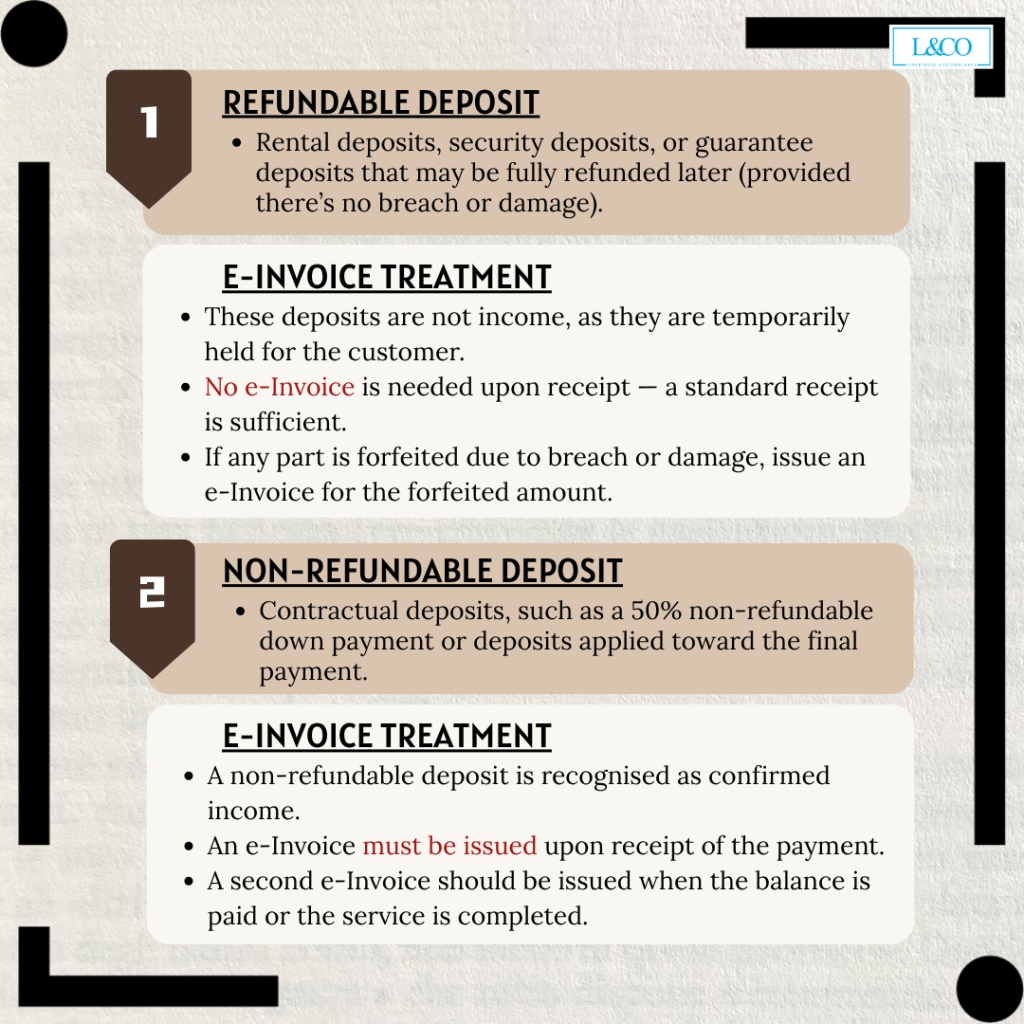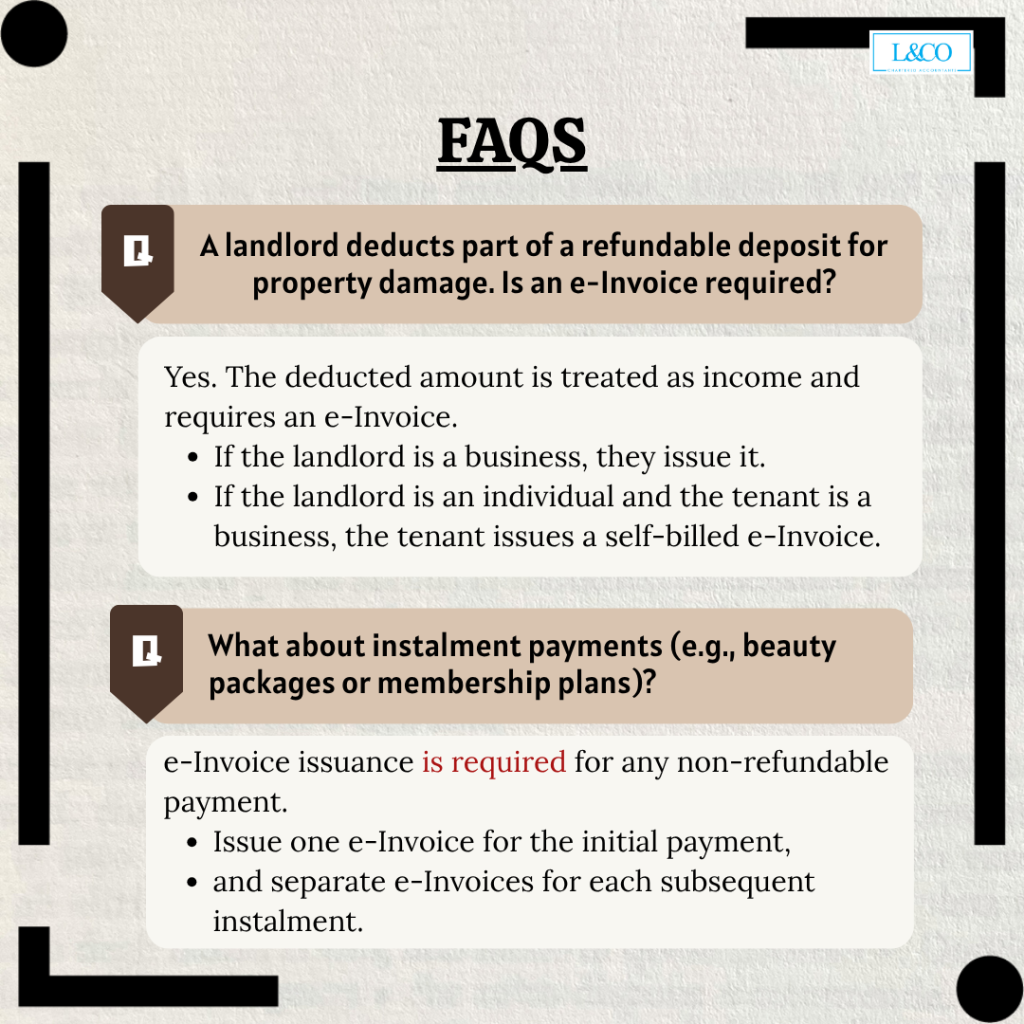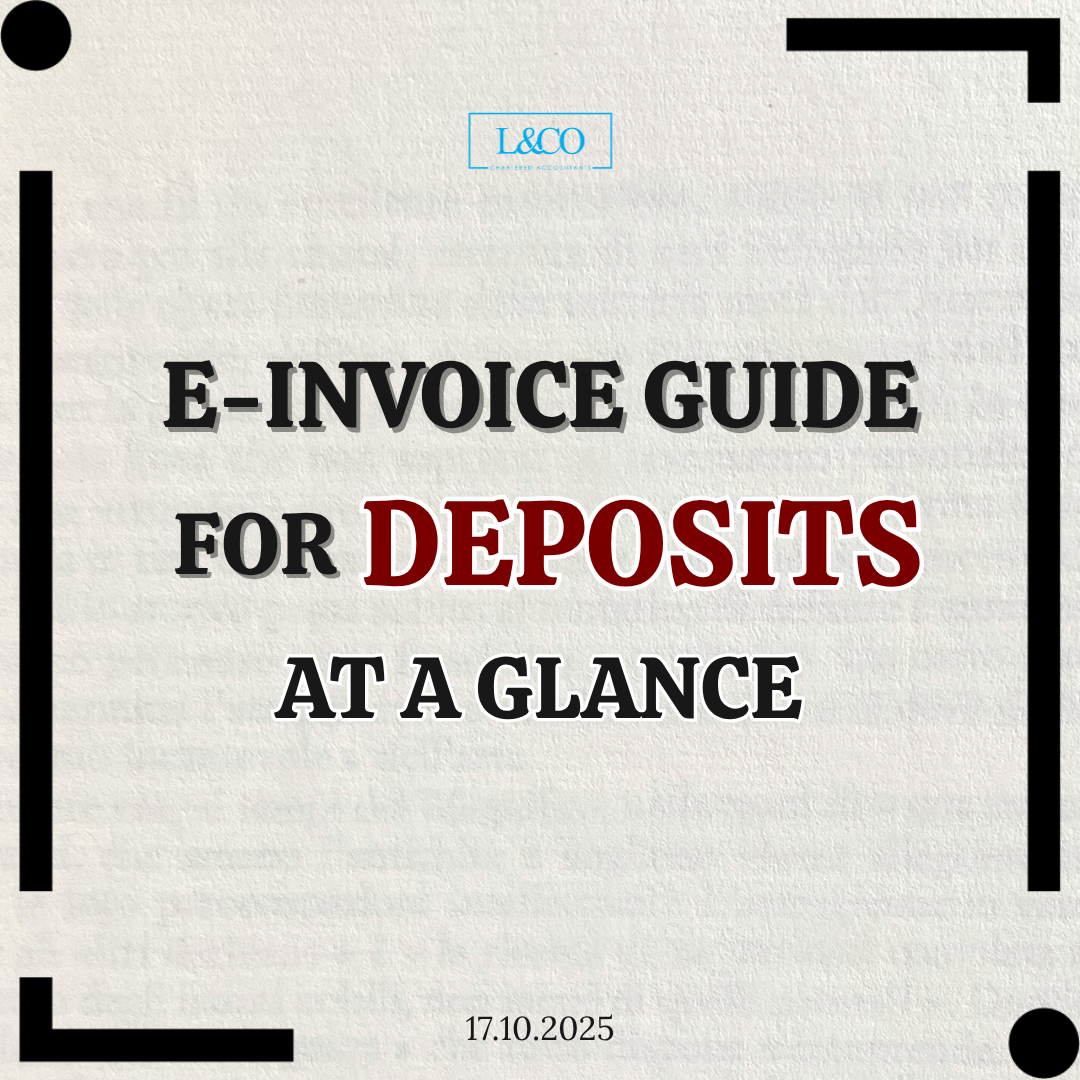Refundable or non-refundable? The handling method makes all the difference!
Refundable Deposit
- Examples: rental deposits, security deposits, or guarantee deposits that may be fully refunded later (provided there’s no breach or damage).
e-Invoice Treatment:
- These deposits are not income, as they are temporarily held for the customer.
- No e-Invoice is needed upon receipt — a standard receipt is sufficient.
- If any part is forfeited due to breach or damage, issue an e-Invoice for the forfeited amount.
Non-Refundable Deposit
- Examples: Contractual deposits, such as a 50% non-refundable down payment or deposits applied toward the final payment.
e-Invoice Treatment:
- A non-refundable deposit is recognized as confirmed income.
- An e-Invoice must be issued upon receipt of the payment.
- A second e-Invoice should be issued when the balance is paid or the service is completed.
Example:
- e-Invoice 1: Deposit 50% (issued upon payment)
- e-Invoice 2: Balance 50% (issued upon completion or delivery)
**Note: An Official Receipt serves only as a payment acknowledgement and cannot replace an e-Invoice.

FAQs
Q: A landlord deducts part of a refundable deposit for property damage. Is an e-Invoice required?
A: Yes. The deducted amount is treated as income and requires an e-Invoice.
- If the landlord is a business, they issue it.
- If the landlord is an individual and the tenant is a business, the tenant issues a self-billed e-Invoice.
Q: What about instalment payments (e.g., beauty packages or membership plans)?
A: e-Invoice issuance is required for any non-refundable payment.
- Issue one e-Invoice for the initial payment,
- and separate e-Invoices for each subsequent instalment.

**Last Updated on 17.10.2025



 (201706002678 & AF 002133)
(201706002678 & AF 002133)